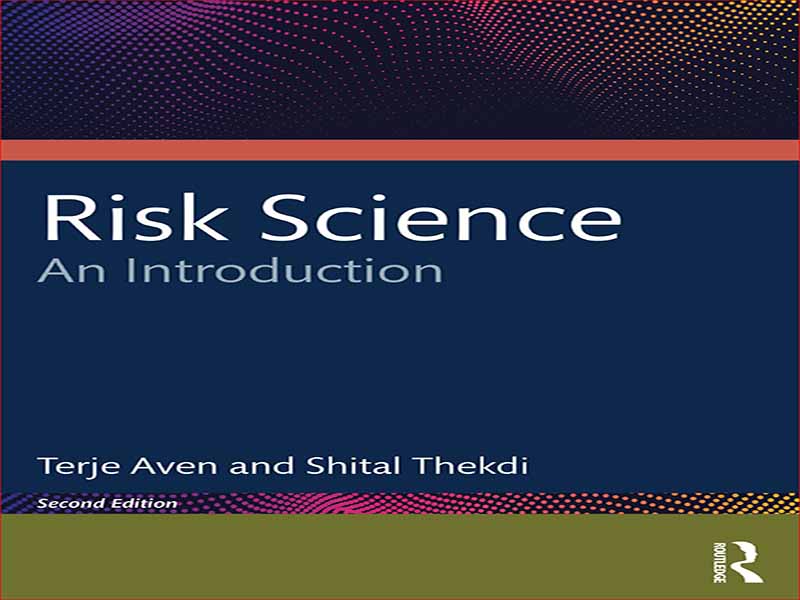- عنوان کتاب: Risk Science
- نویسنده/انتشارات: Terje Aven
- حوزه: مدیریت مخاطرات
- سال انتشار: 2025
- تعداد صفحه: 448
- زبان اصلی: انگلیسی
- نوع فایل: pdf
- حجم فایل: 11.5 مگابایت
از آنجایی که مشاغل، سیاست گذاران و رهبران بخش عمومی وظیفه تصمیم گیری و سرمایه گذاری با استفاده از سطوح مختلف دانش و اطلاعات را بر عهده دارند، علم ریسک اهمیت فزاینده ای پیدا می کند. علم ریسک: مقدمه نظریه و عمل علم ریسک را بررسی می کند و مفاهیم و ابزارهایی را برای درک و عمل در شرایط عدم قطعیت ارائه می دهد. فصلهای این کتاب مفاهیم اساسی، اصول، رویکردها، روشها و مدلهای چگونگی درک، ارزیابی، برقراری ارتباط، مدیریت و کنترل ریسک را پوشش میدهد. این موضوعات به گونهای ارائه و بررسی میشوند که نحوه ارتباط آنها را توضیح میدهد، برای مثال، نحوه توصیف و ارتباط ریسک با تأکید ویژه بر انعکاس عدم قطعیتها. نحوه تشخیص ریسک و قضاوت ریسک حرفه ای؛ نحوه ارزیابی ریسک و راهنمایی تصمیم گیرندگان، به ویژه برای مواردی که شامل عدم قطعیت های بزرگ و تفاوت های ارزشی است. و چگونگی ادغام ارزیابی ریسک با استراتژی های مبتنی بر تاب آوری. این متن نمونهها و مطالعات موردی متنوعی را ارائه میکند که به مسائل بسیار قابل مشاهده و مرتبطی مربوط میشود که دانشگاهیان، شاغلین و رهبران غیرخطری که باید تصمیمات مرتبط با ریسک را اتخاذ کنند، با آن مواجه هستند. این ویرایش دوم اصلاح شده و به روز شده، فصلی کاملاً جدید در مورد یکپارچگی و کیفیت مطالعات ریسک، و پرداختن به اطلاعات نادرست در زمینه ریسک دارد. این کار با ارائه هر دو پیشرفت اساسی و جدید در این موضوع، به ویژه برای دانشجویان دوره های علوم خطر در سطح کالج و دانشگاه مناسب است. این کتاب همچنین خواندن کلیدی گسترده تری را برای دانشجویان و دانش پژوهان در حوزه های دیگر، از جمله تجارت، مهندسی و بهداشت عمومی فراهم می کند.
Risk science is becoming increasingly important as businesses, policymakers and public sector leaders are tasked with decision‑making and investment using varying levels of knowledge and information. Risk Science: An Introduction explores the theory and practice of risk science, providing concepts and tools for understanding and acting under conditions of uncertainty. The chapters in this book cover the fundamental concepts, principles, approaches, methods and models for how to understand, assess, communicate, manage and govern risk. These topics are presented and examined in a way which details how they relate, for example, how to characterize and communicate risk with particular emphasis on reflecting uncertainties; how to distinguish risk perception and professional risk judgments; how to assess risk and guide decision makers, especially for cases involving large uncertainties and value differences; and how to integrate risk assessment with resilience‑based strategies. The text provides a variety of examples and case studies that relate to highly visible and relevant issues facing risk academics, practitioners and non‑risk leaders who must make risk‑related decisions. This revised and updated second edition features an entirely new chapter on the integrity and quality of risk studies, and dealing with misinformation in the context of risk. Presenting both the foundational and most recent advancements in the subject matter, this work particularly suits students of risk science courses at college and university level. The book also provides broader key reading for students and scholars in other domains, including business, engineering and public health.
این کتاب را میتوانید از لینک زیر بصورت رایگان دانلود کنید:
Download: Risk Science




































نظرات کاربران